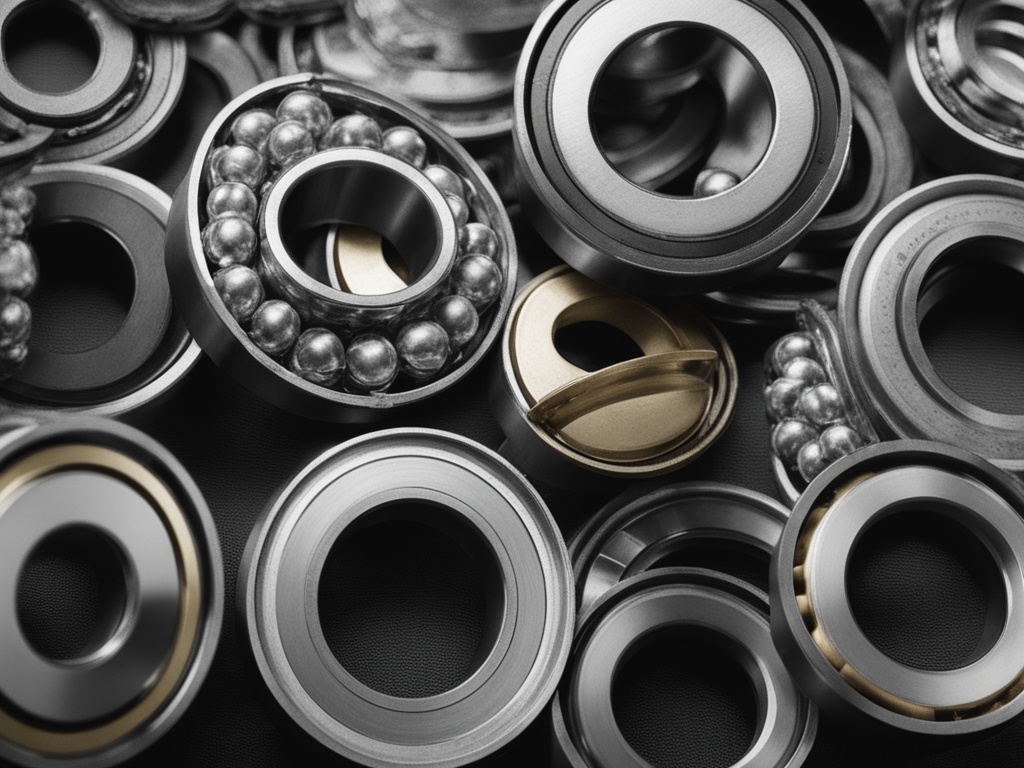The Evolution and Importance of Ball Bearings in Modern Machinery
Ball bearings, simple yet indispensable components of countless mechanical systems, have played a pivotal role in the advancement of modern technology. From their humble beginnings in ancient times to their widespread use in today's high-tech industries, ball bearings have revolutionized the way we design and use machinery.

The concept of ball bearings can be traced back to ancient civilizations such as the Greeks and Romans, who used balls of stone or wood to reduce friction in wheels and other devices. However, it was not until the 19th century that ball bearings truly emerged as a precision engineering component. With the industrial revolution in full swing, there was a growing demand for more efficient and durable machinery, and ball bearings answered that call.
Early ball bearings were made from a variety of materials, including steel, brass, and even ivory. They were used primarily in watches and other precision instruments, where their ability to reduce friction and provide smooth, predictable rotation was crucial. As manufacturing techniques improved, so did the quality and durability of ball bearings, allowing them to find their way into heavier-duty applications like bicycles, automobiles, and industrial machinery.
Today, ball bearings are found in virtually every type of mechanical system imaginable. They are used in everything from electric motors and generators to aerospace equipment and medical instruments. The reason for their ubiquity is their unique ability to reduce friction and enable efficient energy transfer. Without ball bearings, many modern devices would be significantly less efficient, noisy, and prone to wear and tear.
In addition to their practical applications, ball bearings have also played a key role in the development of other technologies. For instance, the precision required to manufacture ball bearings has driven the advancement of materials science, machining processes, and lubrication techniques. The design and optimization of ball bearings have also been key to improving the overall performance of mechanical systems, from increasing speed and reducing heat generation to enhancing durability and reliability.
Despite their widespread use, the design of ball bearings remains relatively simple. At their core, ball bearings consist of three main parts: an inner ring, an outer ring, and a series of balls that sit between them. As the inner ring rotates, the balls roll smoothly against the inner and outer rings, reducing friction and allowing for efficient rotation. The design is both elegant and remarkably durable, making ball bearings a staple of the engineering world.
However, the simplicity of the design belies the complexity of their manufacture. Producing high-quality ball bearings requires precision machining, strict quality control, and the use of high-performance materials. Even the smallest imperfections in the manufacturing process can lead to premature failure or reduced performance, making the production of ball bearings a highly specialized and exacting endeavor.
As we look to the future, the role of ball bearings in engineering and technology is likely to continue to evolve. With the advent of new materials and manufacturing processes, we may see the development of even more efficient and durable ball bearings. Additionally, the integration of ball bearings into smarter, more interconnected systems could lead to new applications and usage scenarios that we have yet to imagine.

In conclusion, ball bearings have come a long way from their humble beginnings as simple devices used to reduce friction. Their impact on modern technology and engineering is profound, and their influence is felt in virtually every facet of our lives. As we continue to push the boundaries of what is possible, it is likely that ball bearings will remain a crucial component of our mechanical systems, enabling us to build faster, stronger, and more efficient machines that power our world.




 13869596835
13869596835